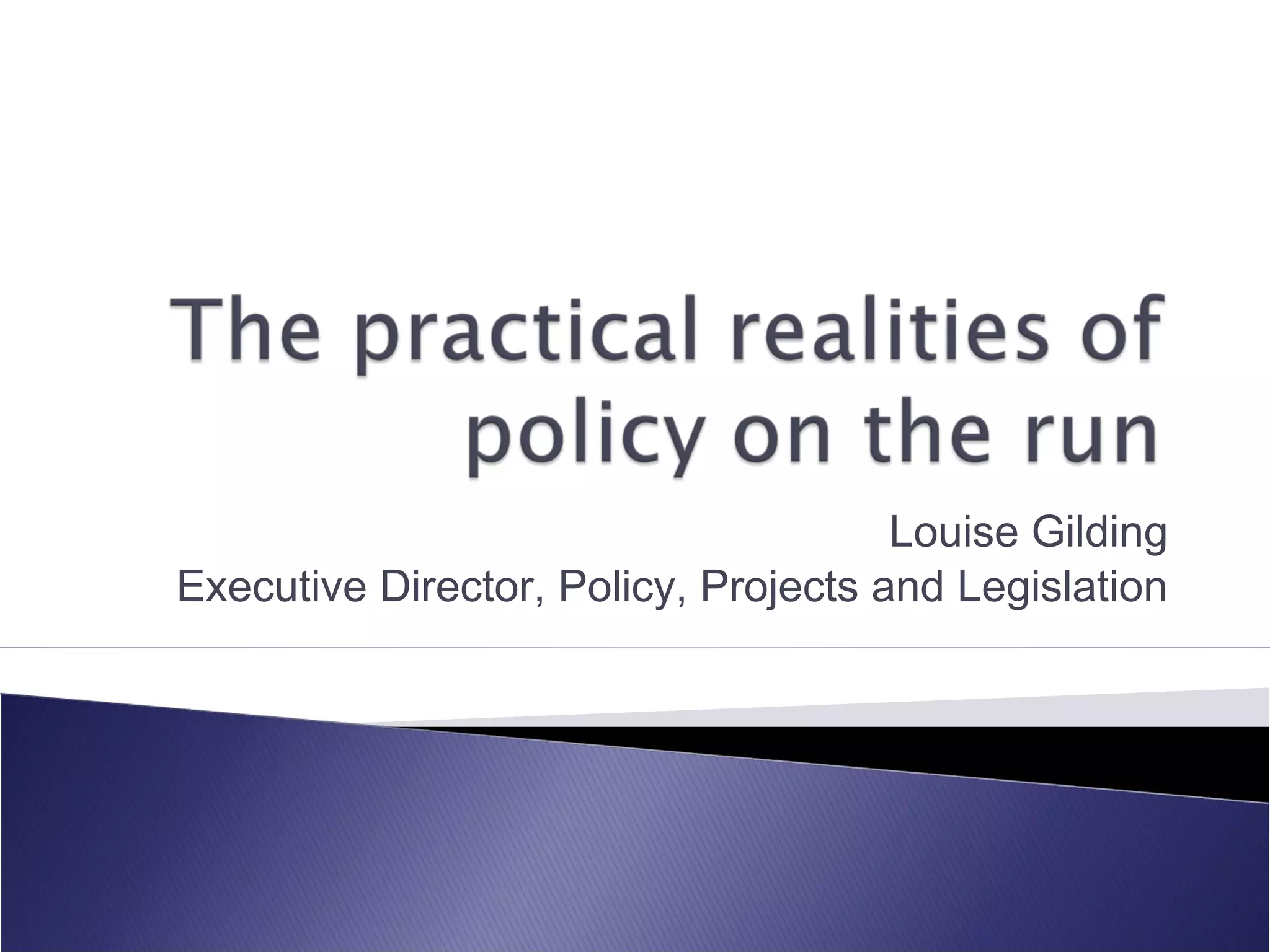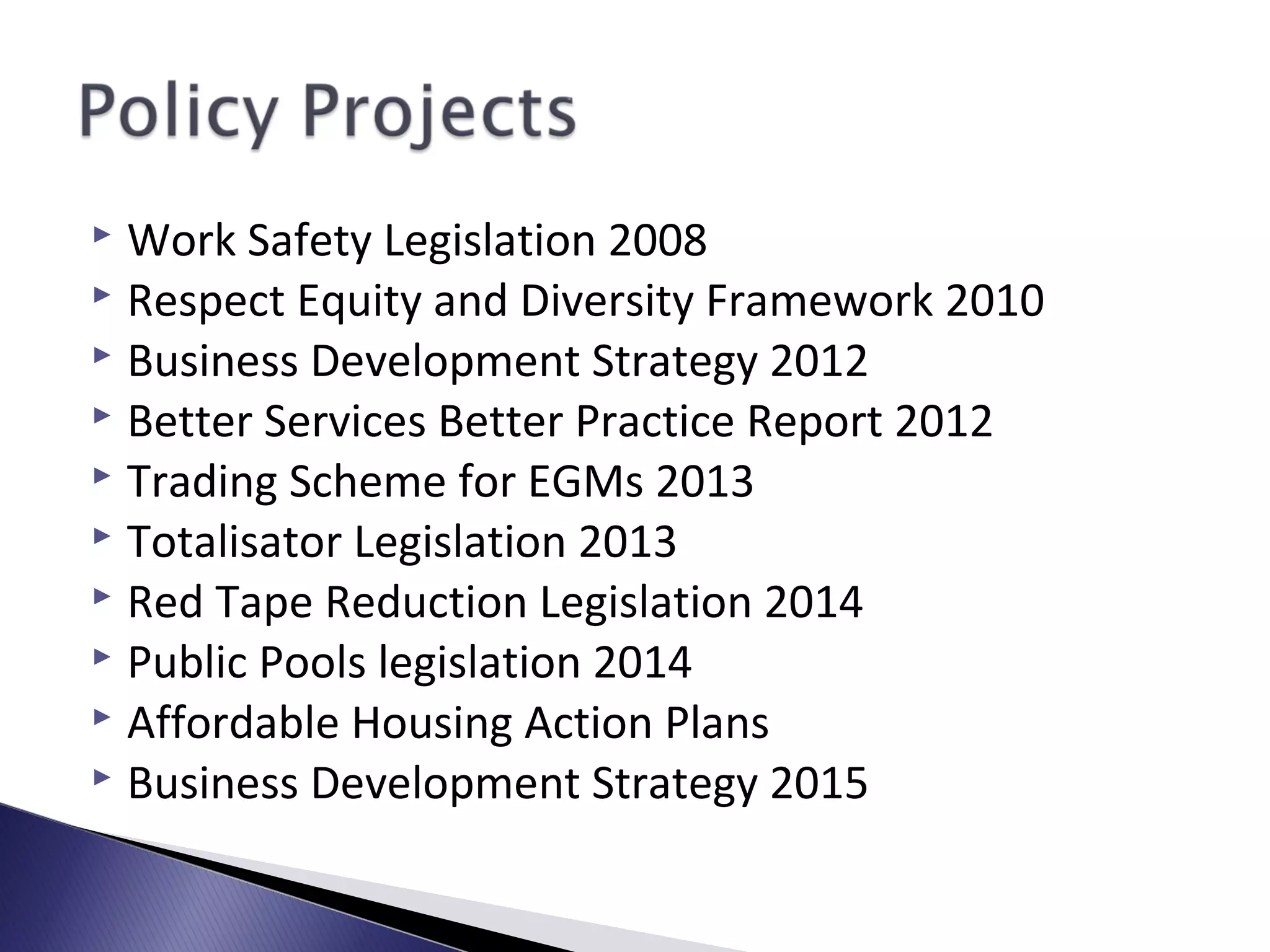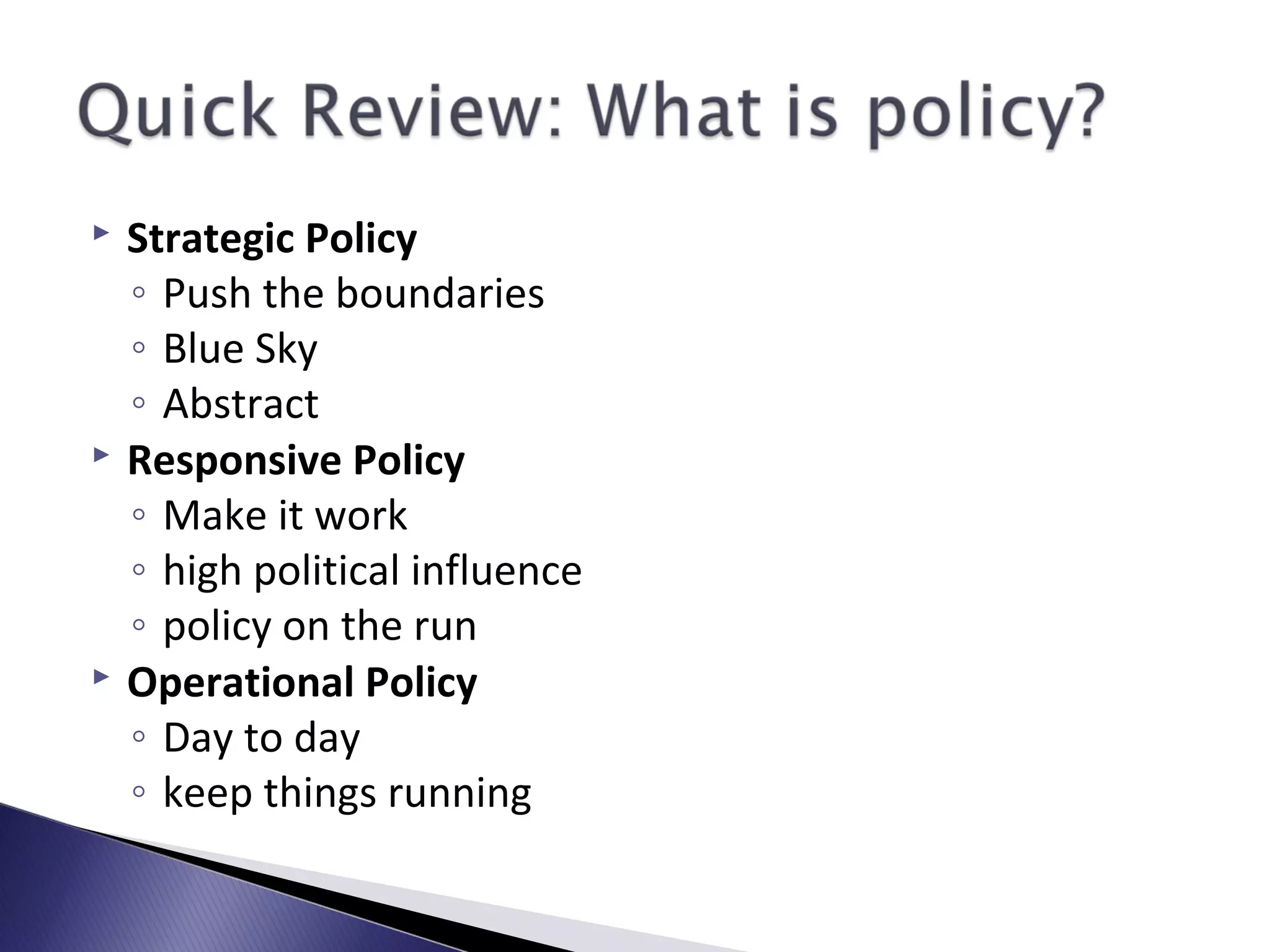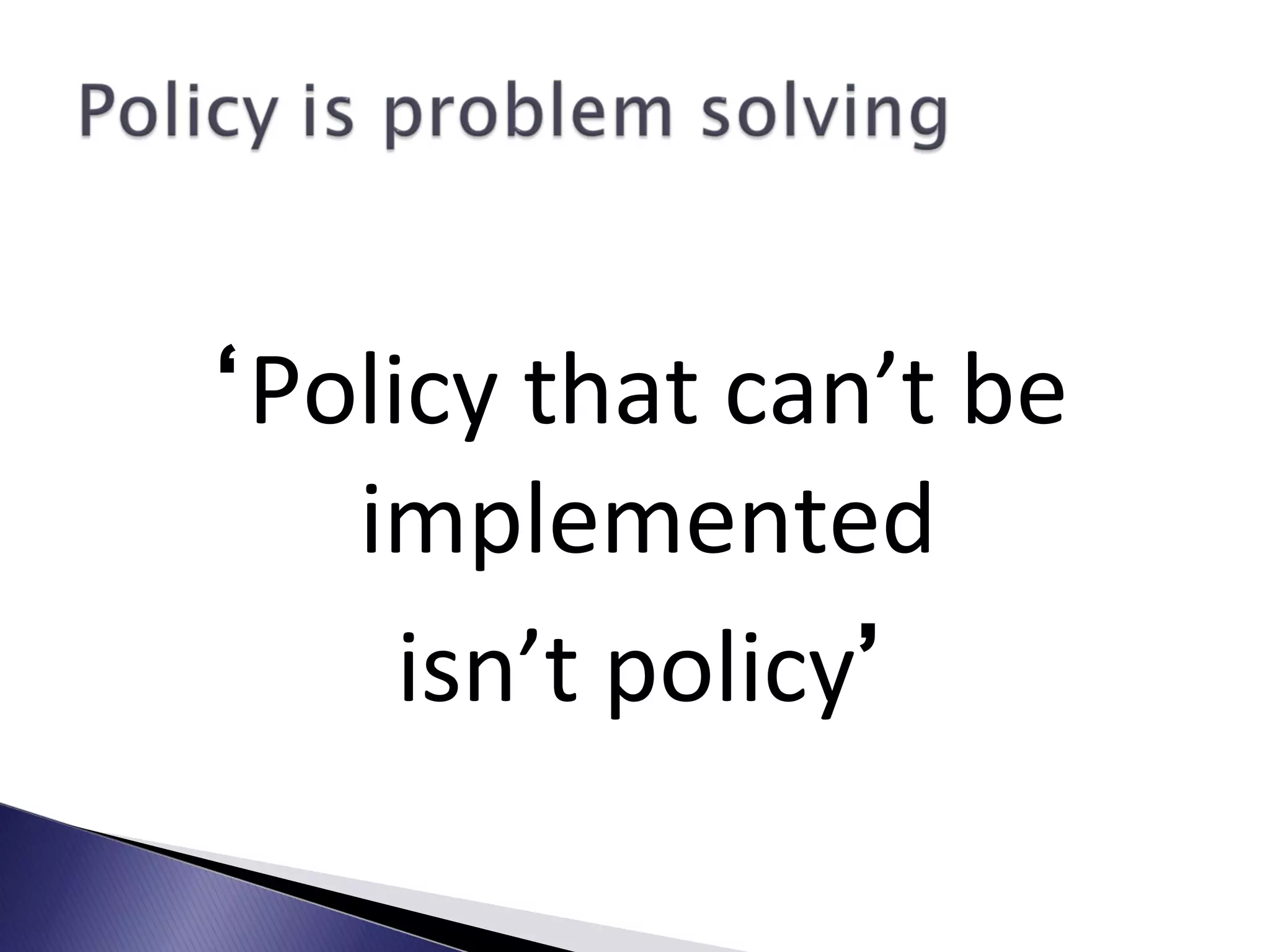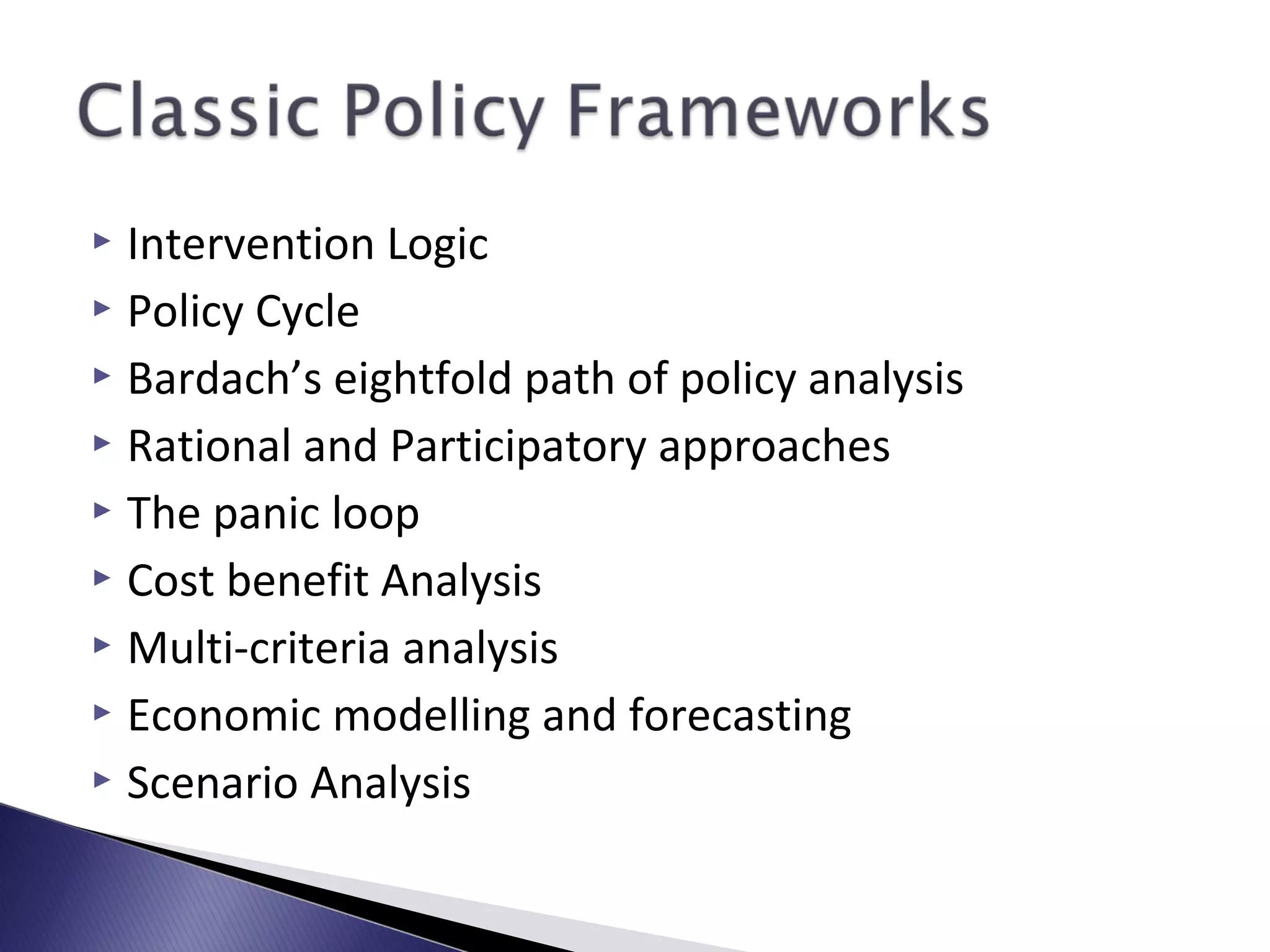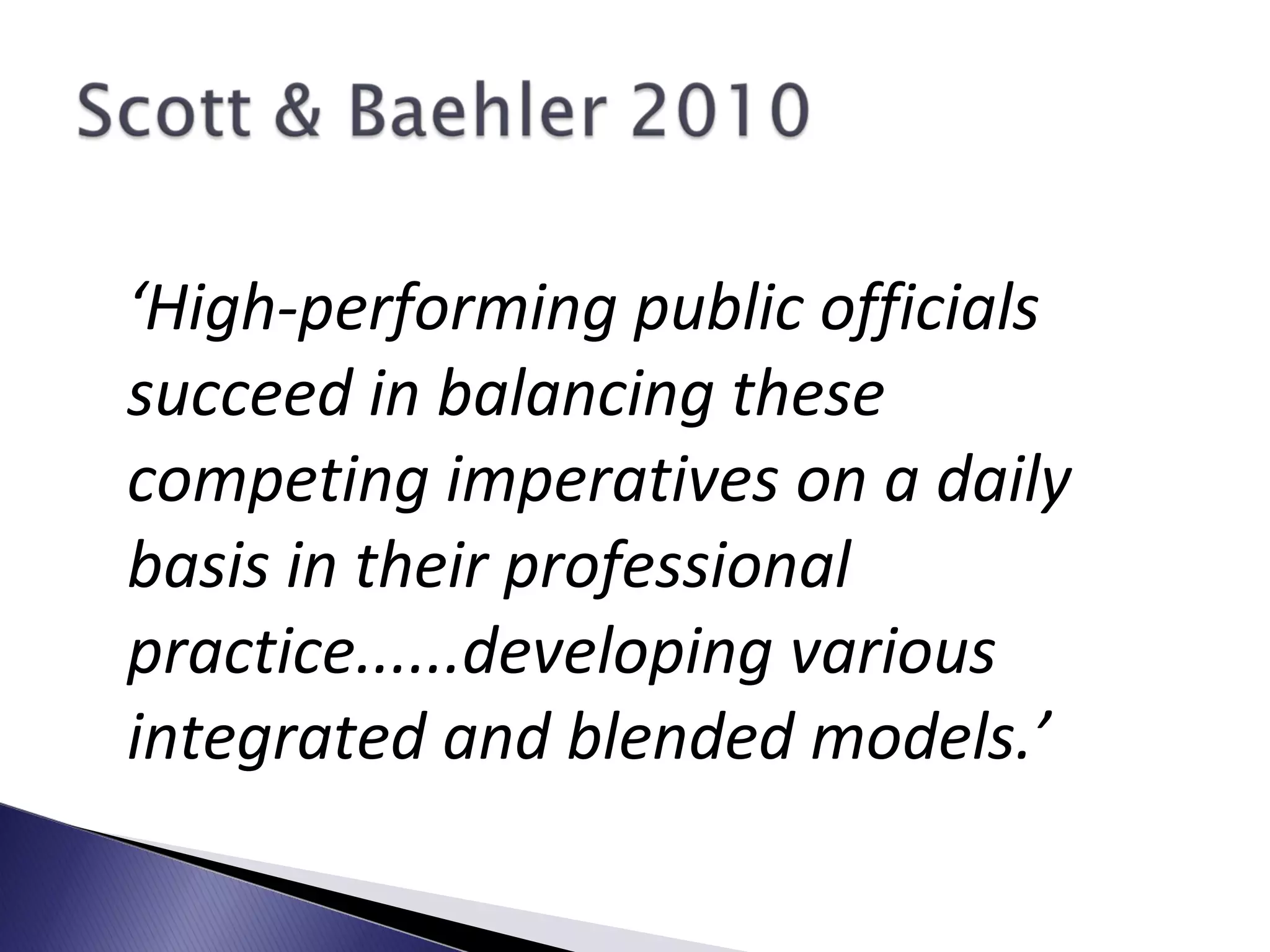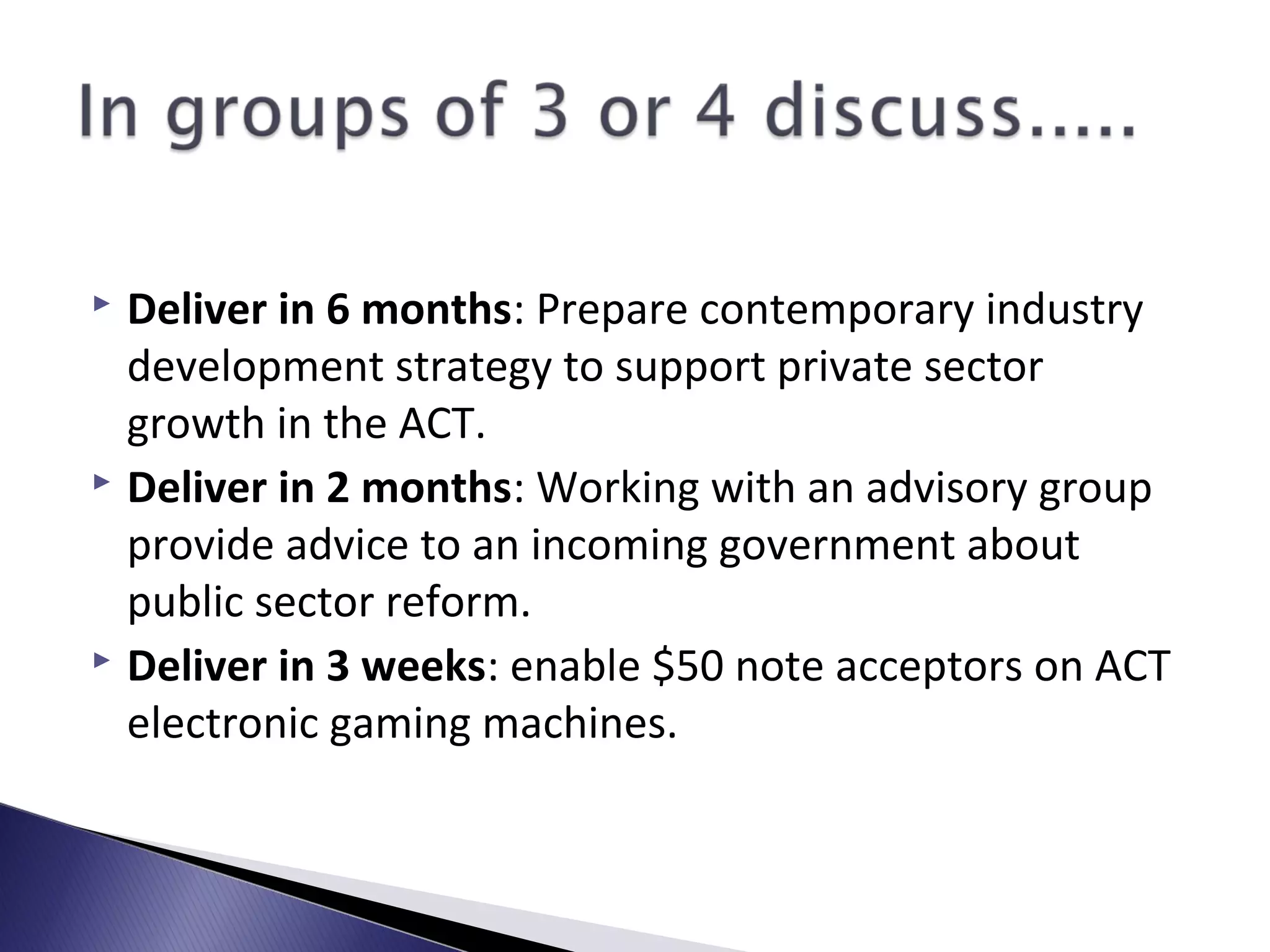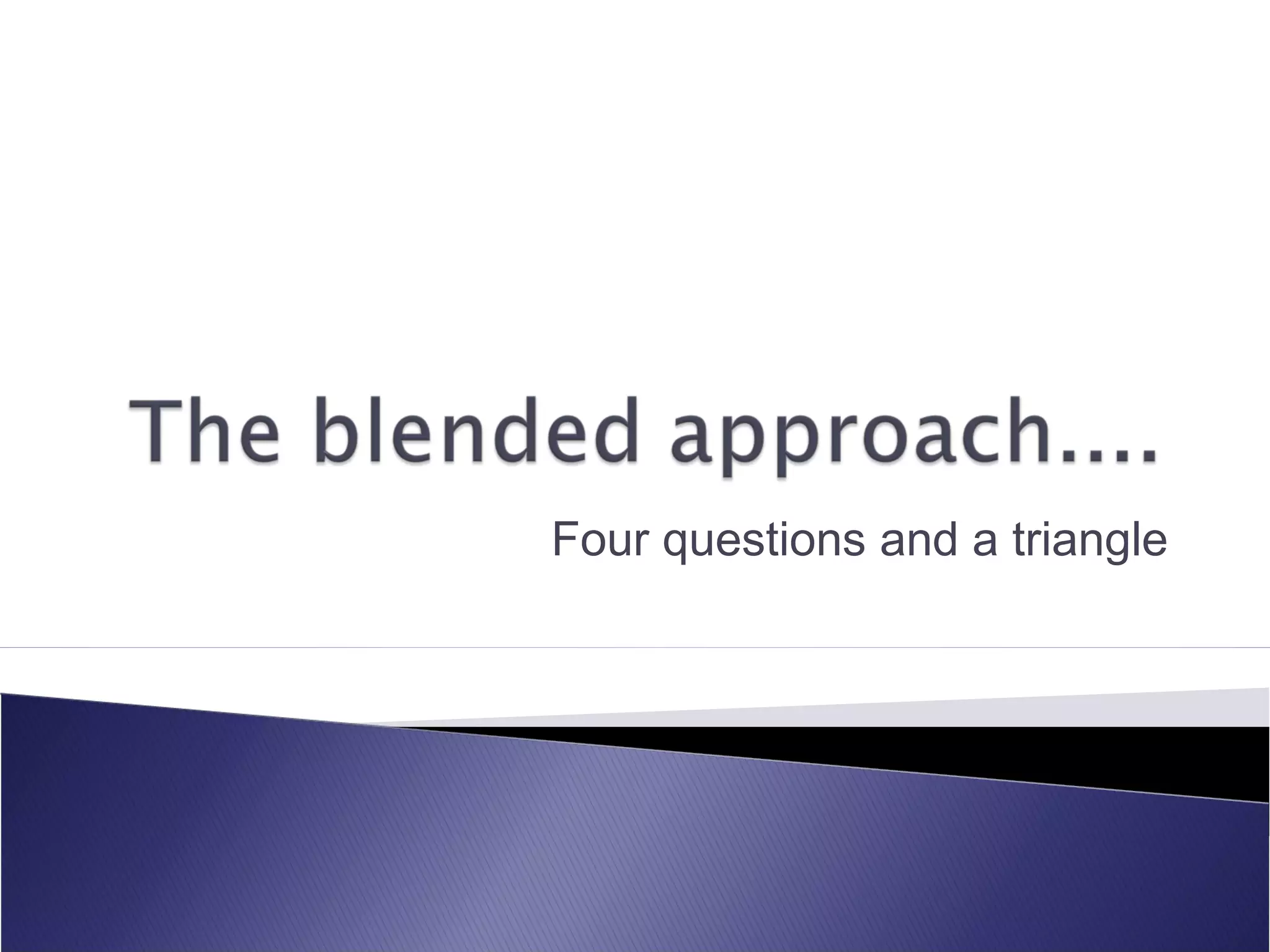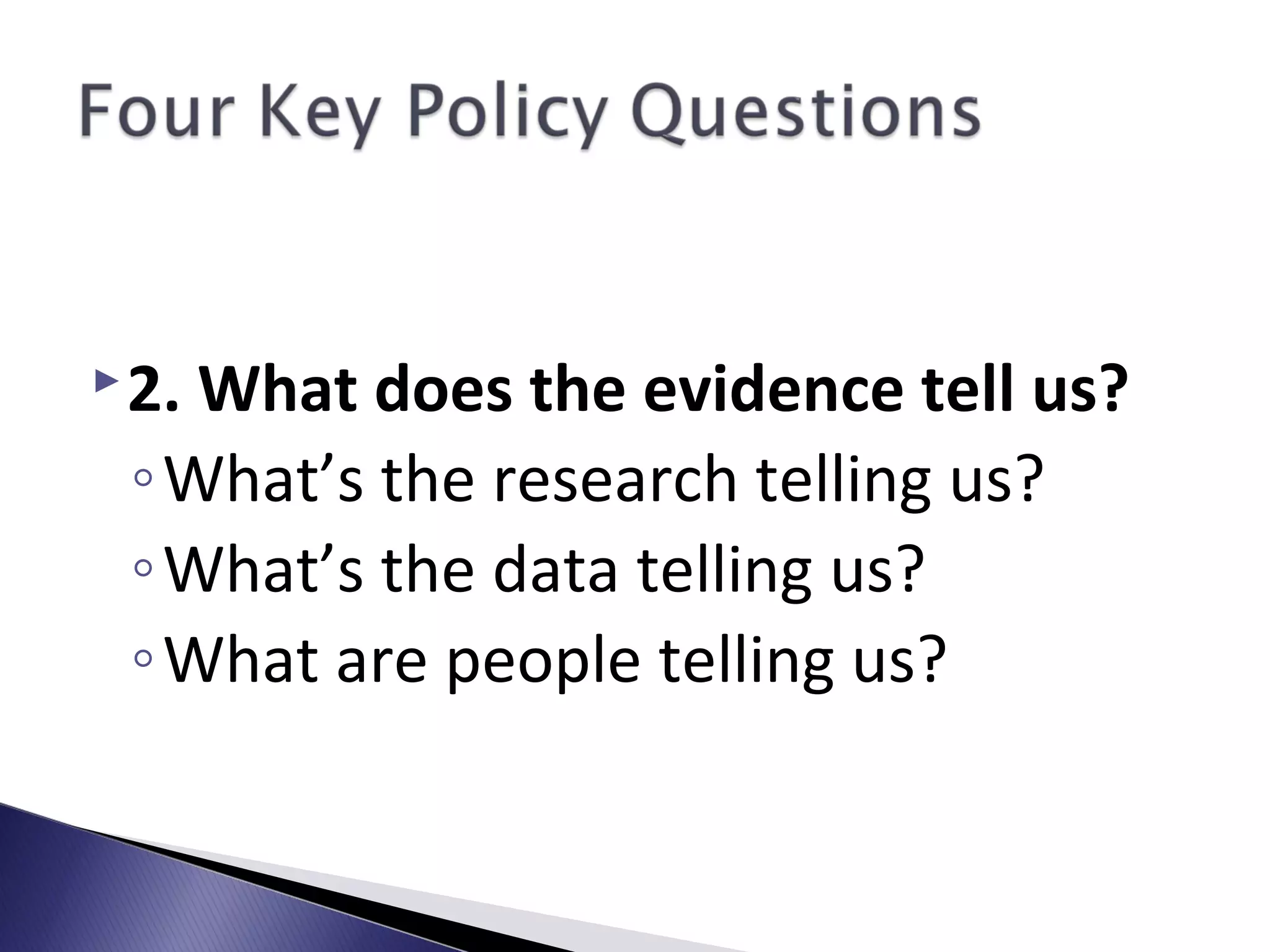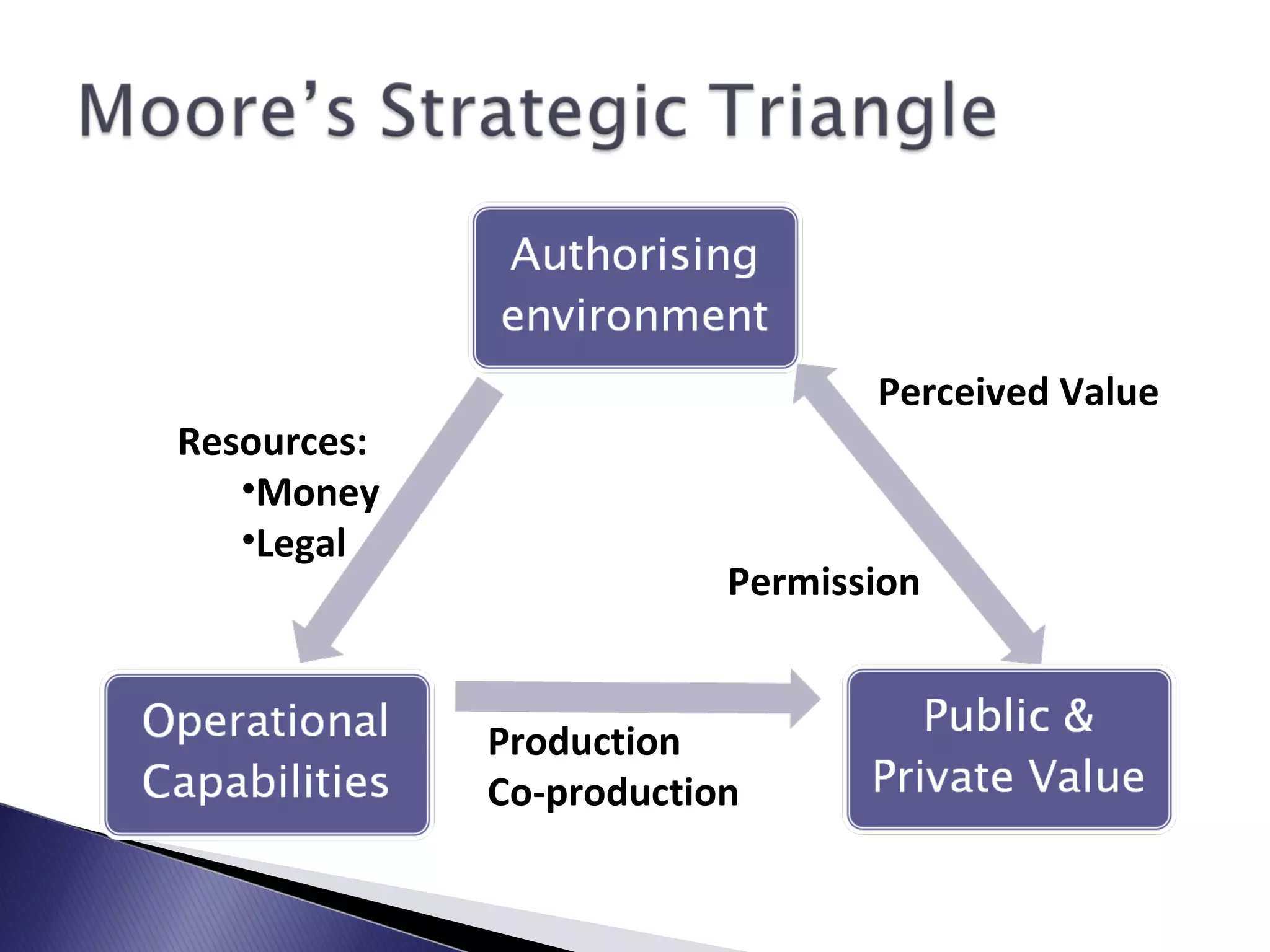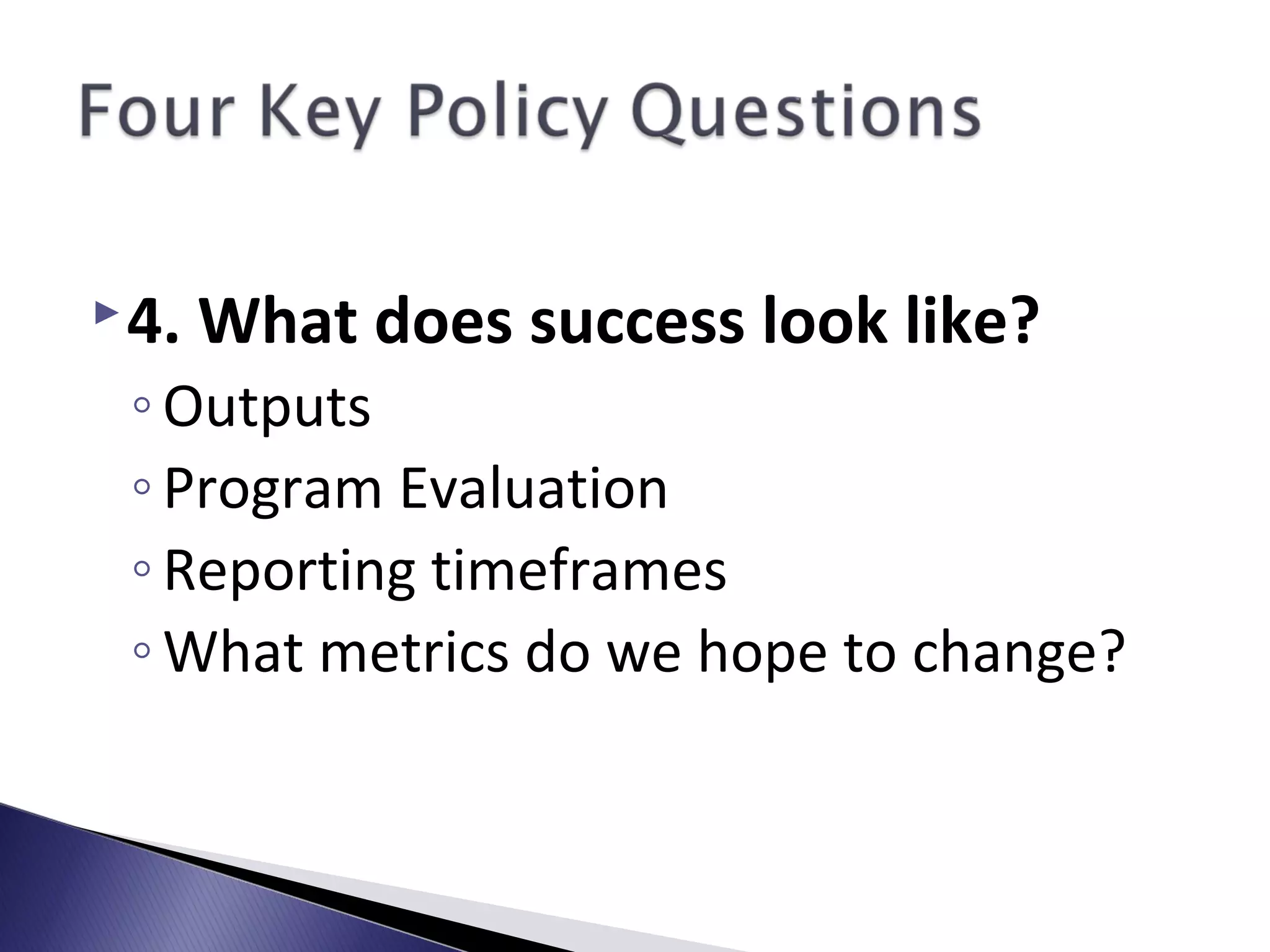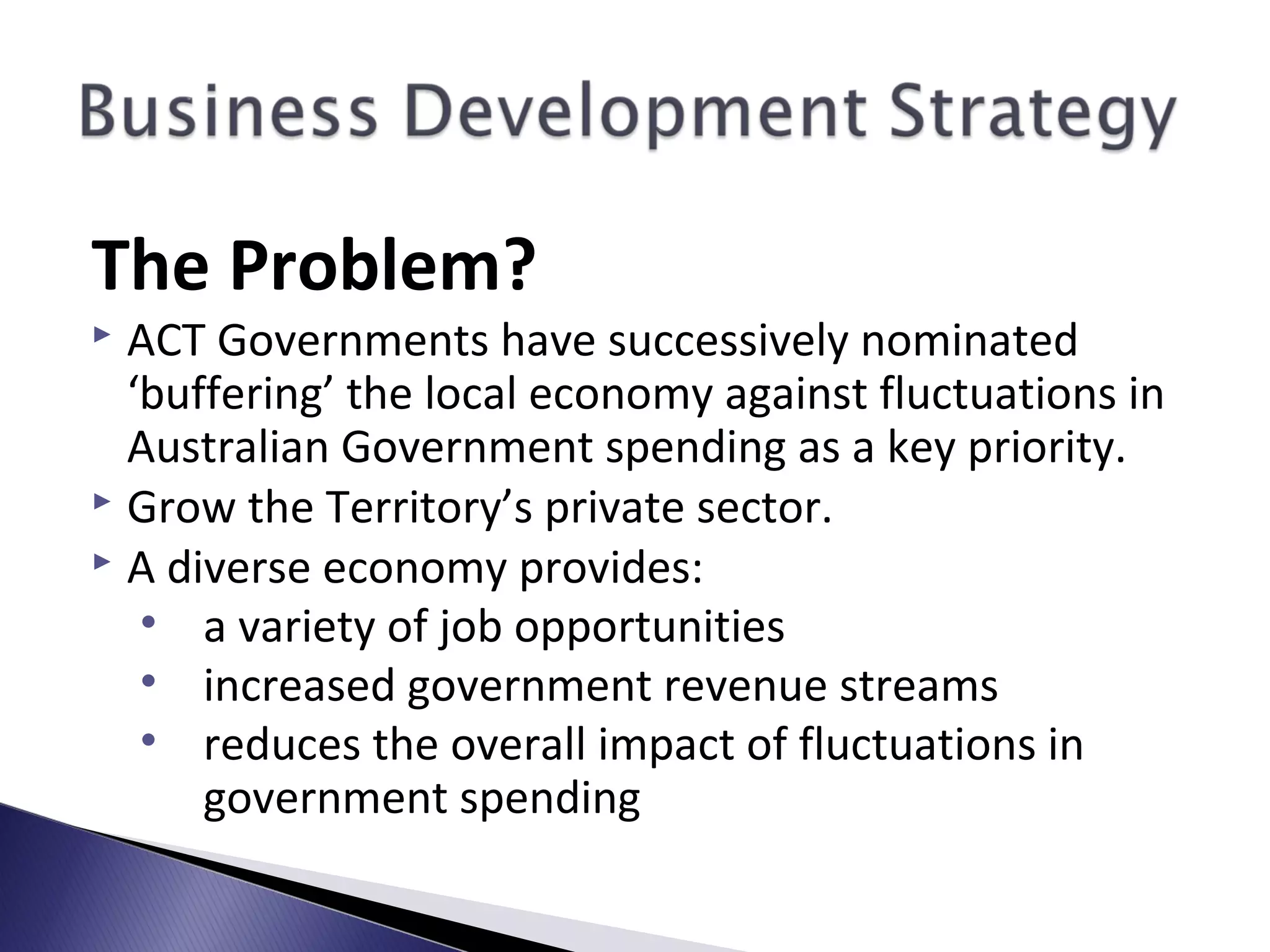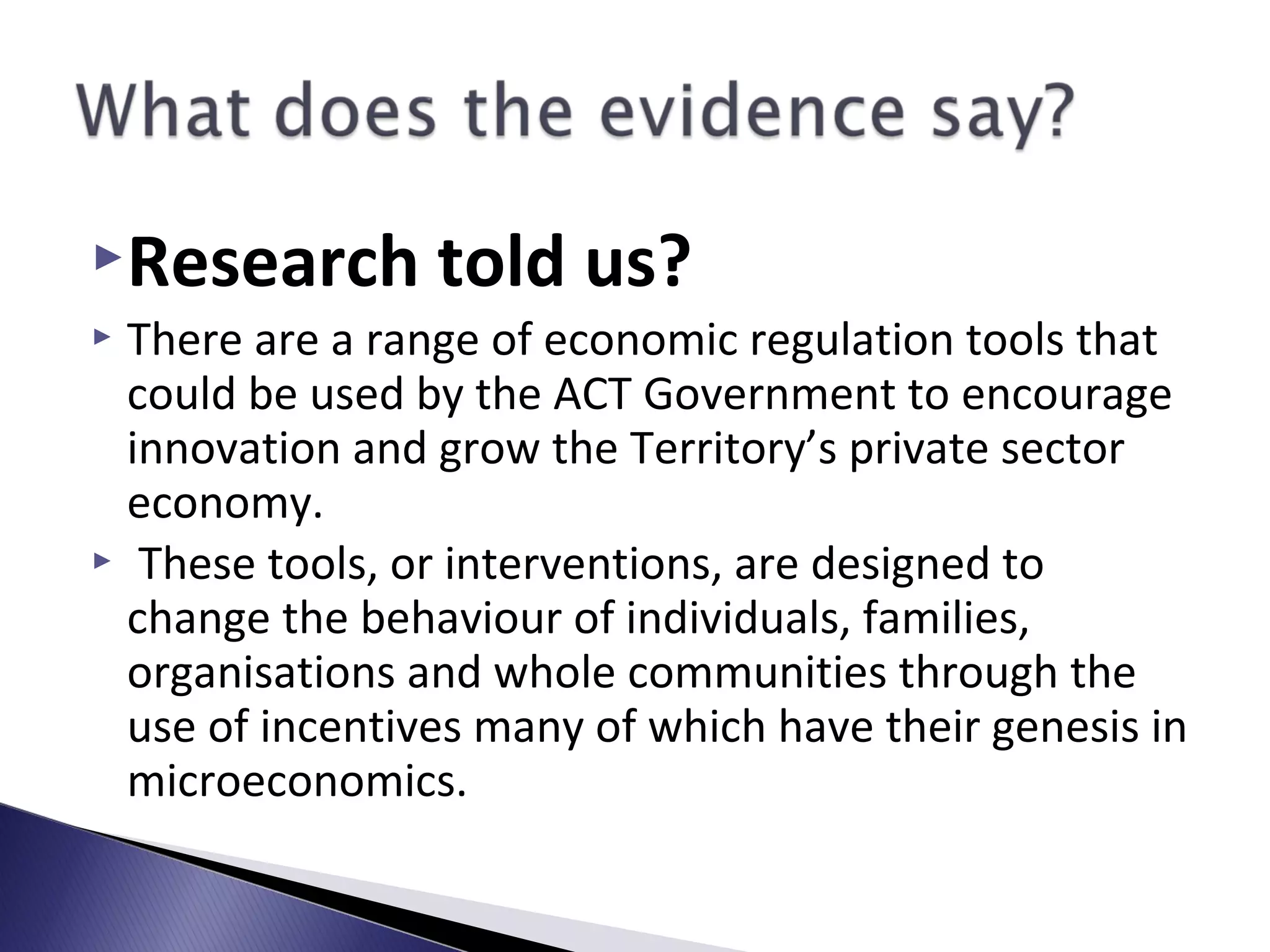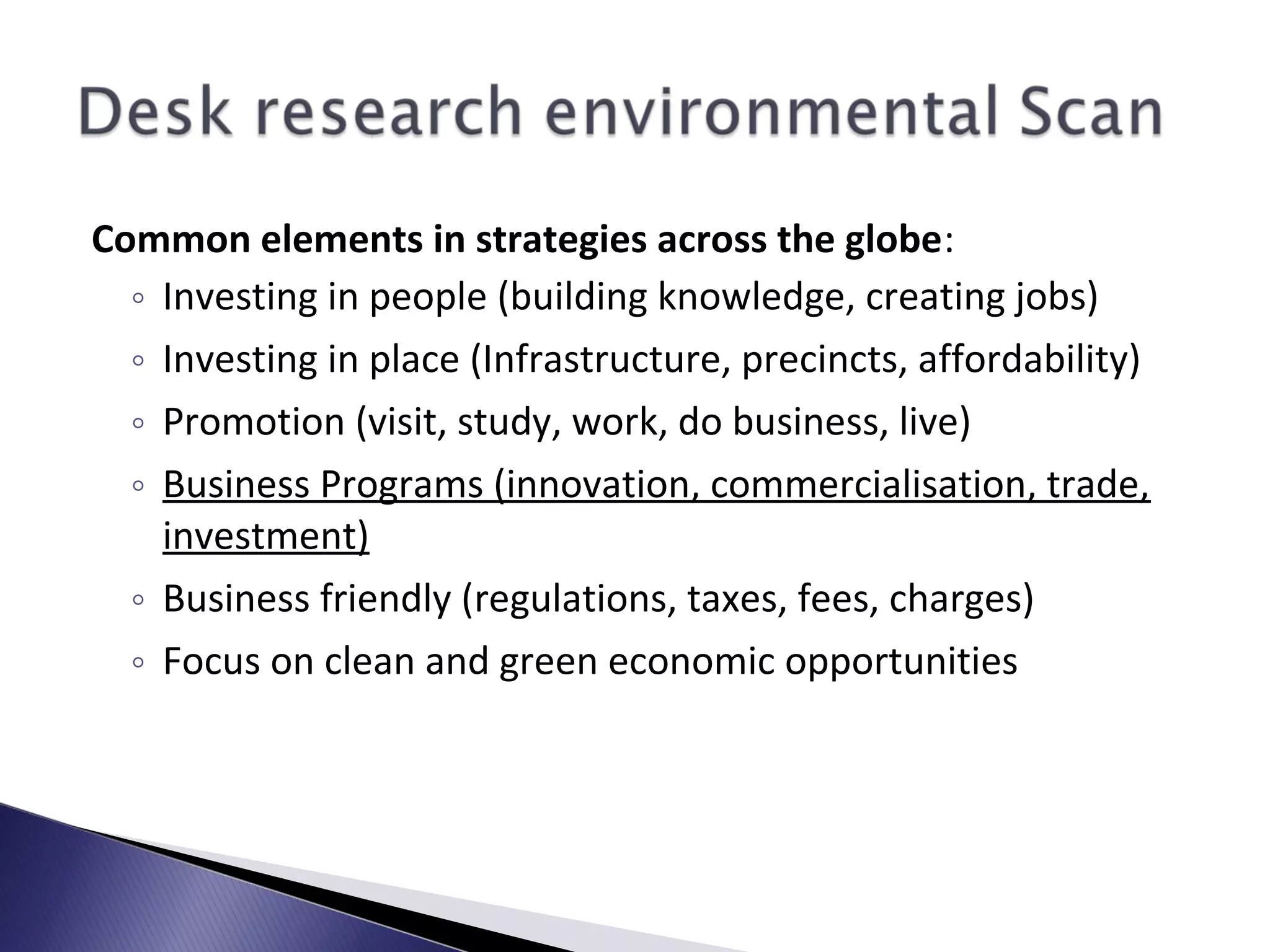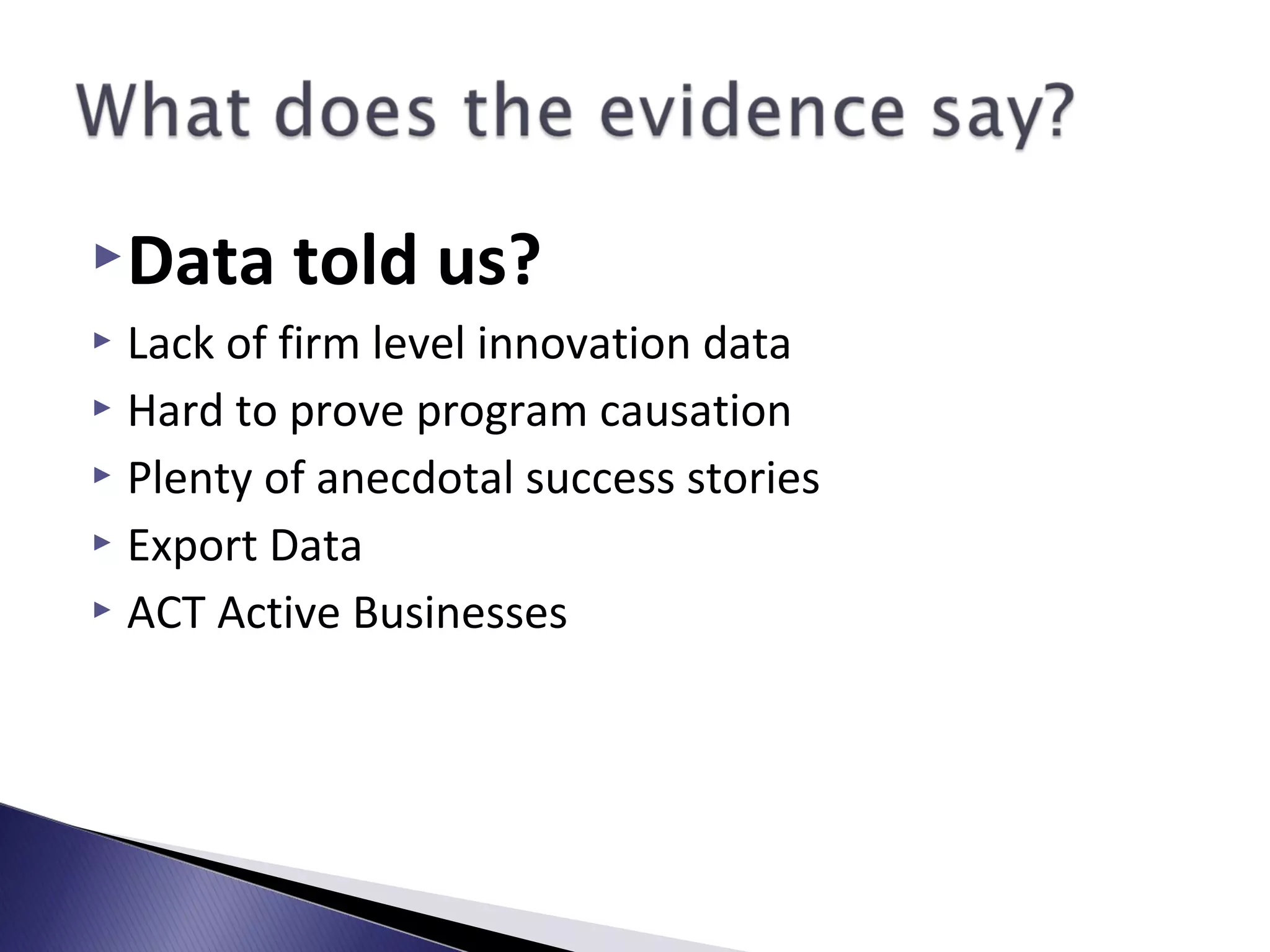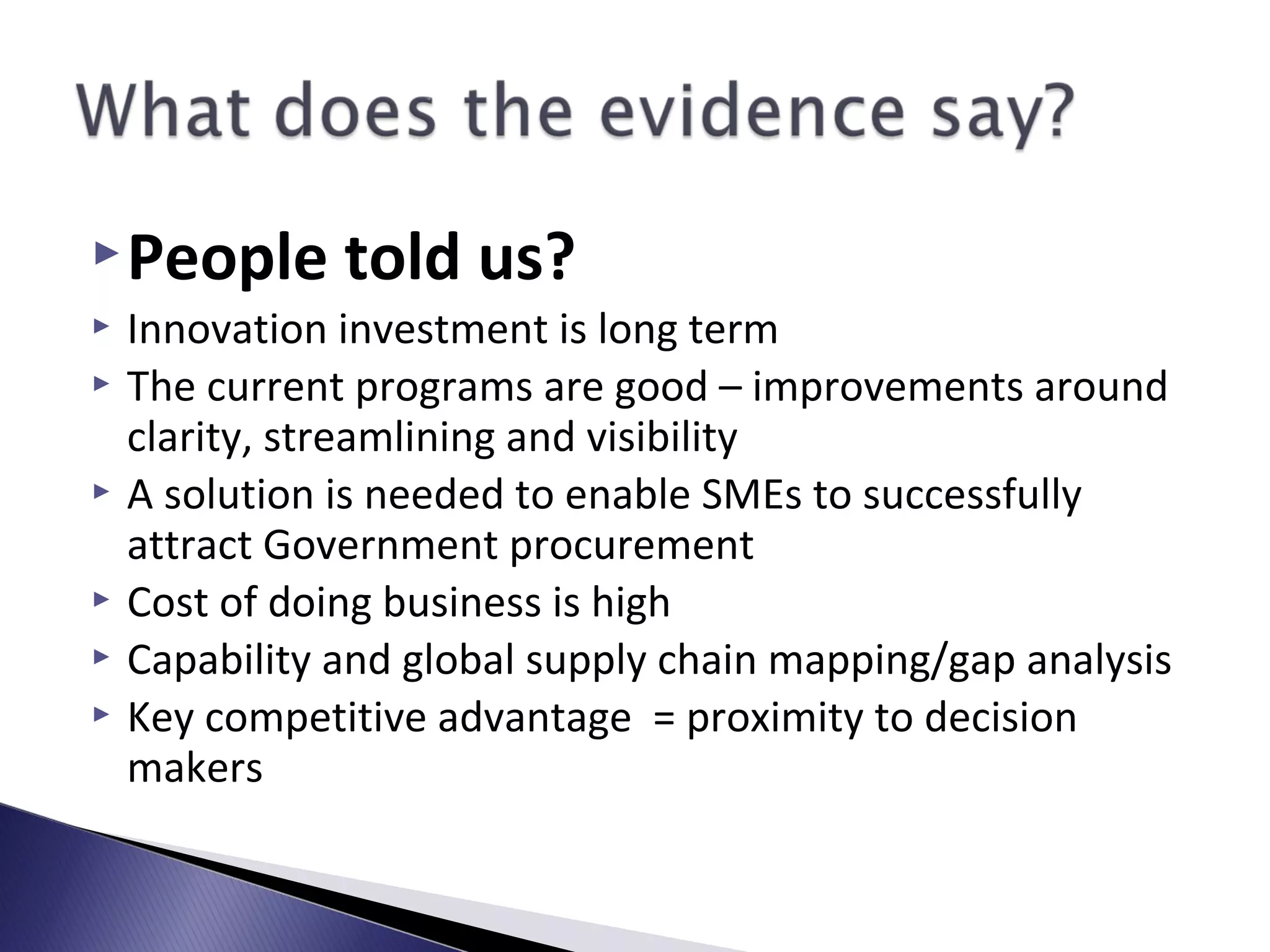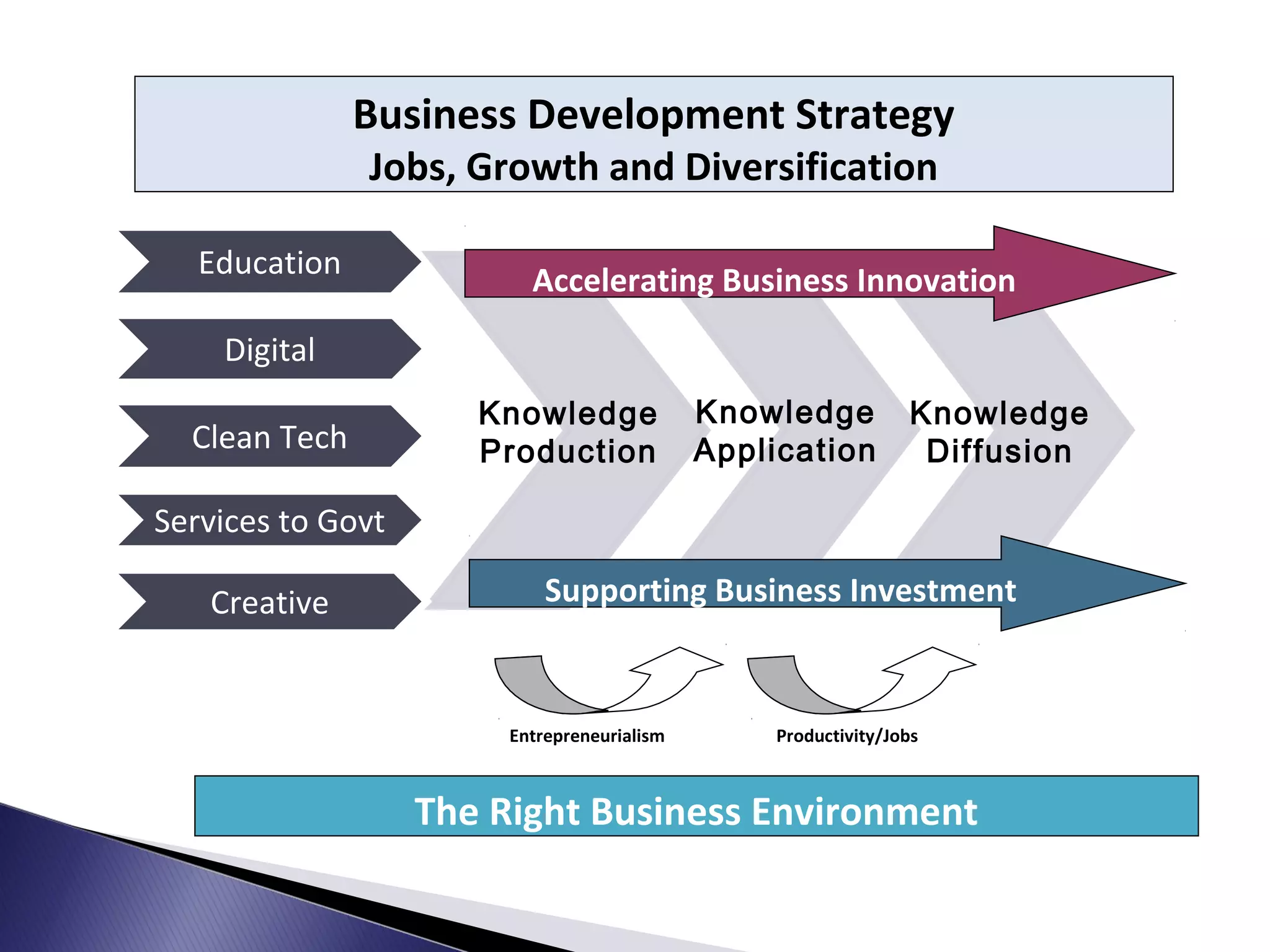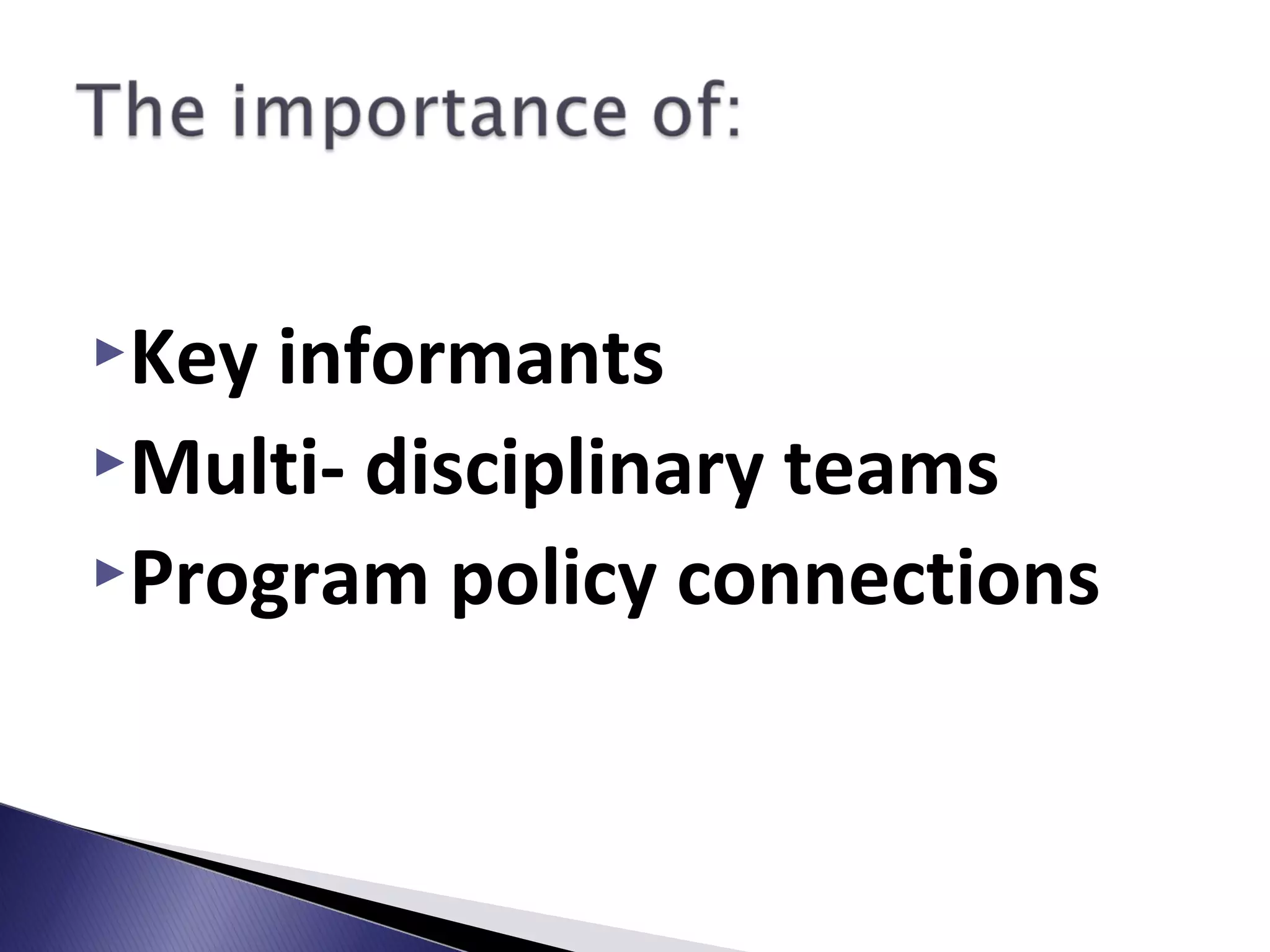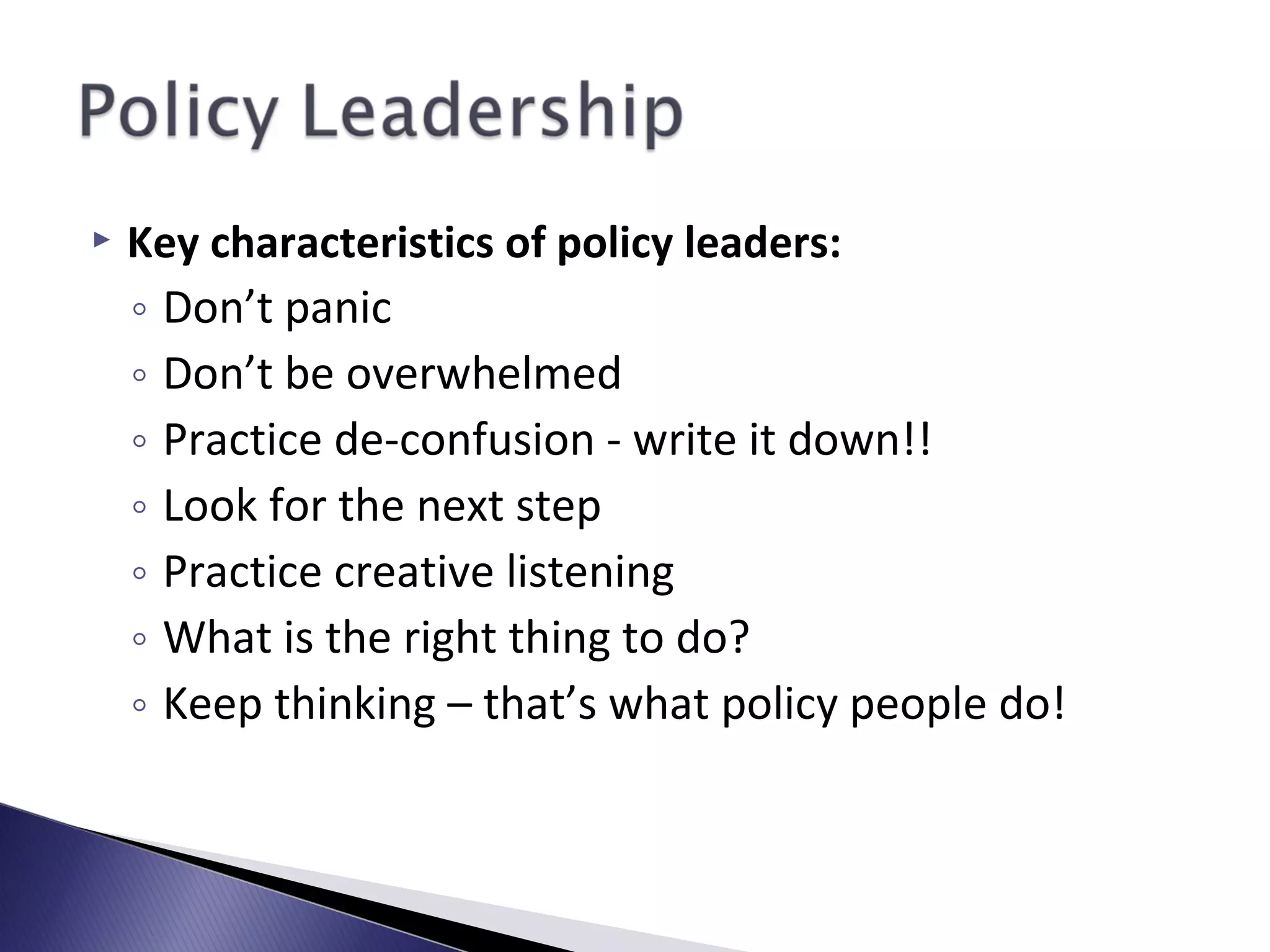This document outlines Louise Gilding's work as Executive Director of Policy, Projects and Legislation. It discusses her experience developing various policies and legislation around work safety, equity, gambling, and housing. The document then discusses different approaches to strategic, responsive, and operational policymaking. It provides examples of policy tasks and outlines a framework for policy analysis involving defining the problem, reviewing evidence, recommending solutions, and defining success metrics. Finally, it discusses developing a new business development strategy to diversify the ACT economy and create jobs through investing in people, infrastructure, promotion of industries like education, clean tech, and services to government.
